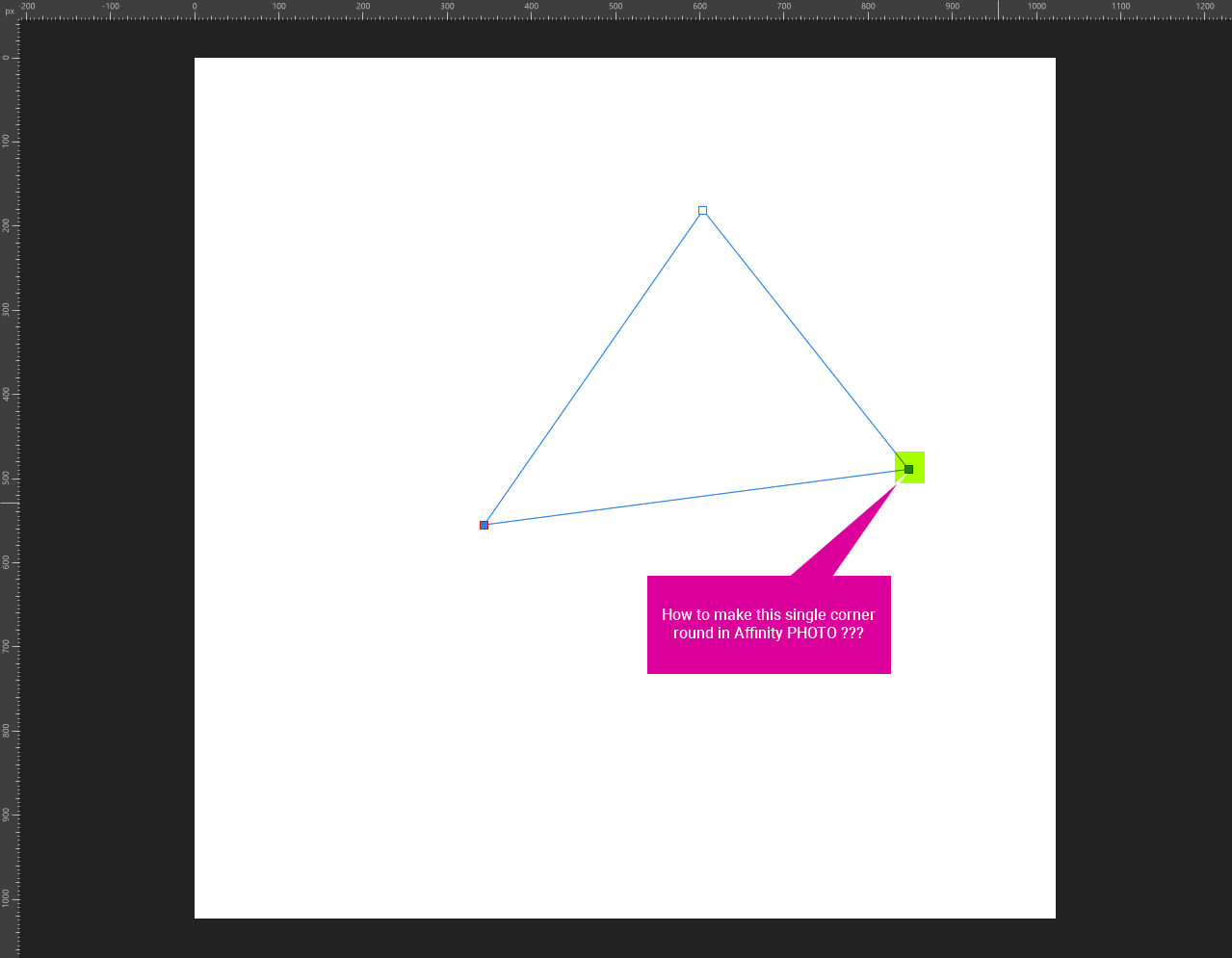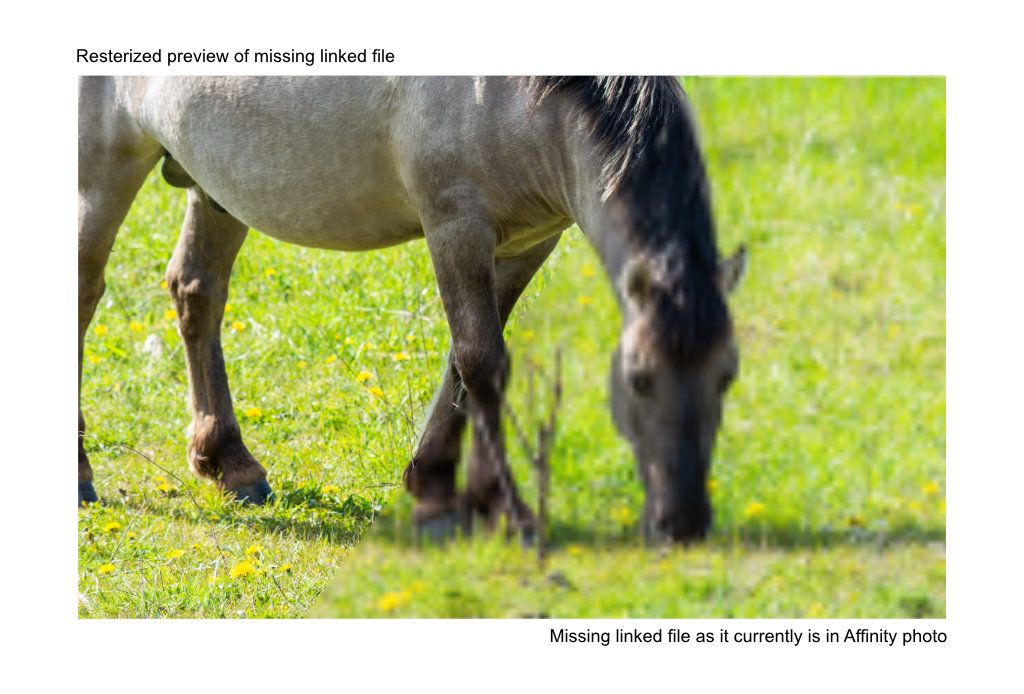-
Posts
50 -
Joined
-
Last visited
Posts posted by Christoph Werner
-
-
20 hours ago, Mike_A said:
I wasn't meaning to imply those features were unimportant - they are important for me too. I'm mainly working in 3D CGI - so 32bit renders, ACES and EXR are one of the main reasons I got AP in the first place. It just seems very odd to me that they claim their target market to be 'photographers and photo editing', but do support advanced features and functionality such as 32b, ACES, EXR - and yet don't support basic features like direct and unrestricted alpha manipulation. Bizzare.
Completely agree.
-
5 hours ago, Mike_A said:
...and yet they support ACES colour management and 32 bit exr files... How many photographers use those?
I'm working with 32 bit EXR files, even multilayered... So it's not that unimportant. But actually this features are needed for compositing tasks mainly, where AP doesn't make much sence.
-
-
Alpha channel editing is something the most professionals do every day. And the confusing/unusable system in Affinity is something that should be chagend asap in my opinion. I also don't understand why this is not touched for such a long time. AP could be so good.
I stopped to use AP because of this and jumped back to Photoshop.
-
1 hour ago, NotMyFault said:
Ok, i see it now.
It will become possible if you convert inherent masks to explicit mask layer.
The simplest way to achieve the desired function (as workaround) is:
-
For (every) pixel layers,
- create mask from layers alpha,
- fill layer alpha,
-
nest mask to pixel layer
-
You can then edit the mask layer with all edit tools and (destructive) filters
-
If you need the layers re-combined again for final export:
- rasterize layer (pixel with nested mask)
I know this way. But the most important for many people: You can't paste copied image information into the active mask layer. I would like to know the reason for this missing function?
-
For (every) pixel layers,
-
11 hours ago, NotMyFault said:
now you are confusing me.
I was talking about spare channels. These are neither RGB or Alpha, but can be transformed by one-click actions from and to any other channel type.
The difference between copy/paste and create spare channel / load to layer <choose you channel> is not that huge.
Sorry. My fault.
Hint: But you don't need a seperate spare channel to edit a RGB value. Just click on one of the RGBA channels and you can paint on it.
The main problem, that is described but missed in the meantime, is the missing of the possibility to work directly in an alpha channel if it was a regular image layer. I mean to paint, use (most) filters or copy image data into it etc. This is something that is working completely different in Affinity Photo and very complex to understand for people. Too much steps to simply edit an alpha channel. This works more intuitive and better in other software.
-
1 hour ago, NotMyFault said:
I don't know when this functionality has been introduced, i never recognized this before, and others may have overlooked it, too.
When you left-click on a spare channel in the channels panel, the current image gets temporary replaced by that spare channel, and you can directly edit the channel with regular edit tools (blur, sharpen, brush, ...). This is similar to isolation mode for mask layers.
I know, this does not give a major part of the desired / request functionality of the thread, but every little steps help.
...
Yes. But this funtion is limited to the RGB channels. Alpha is not working this way. And you can't copy/paste directly into channels.
-
-
1 hour ago, Old Bruce said:
You may have to set up a brush to use the rotate feature. I don't know if any of the default brushes are set up to utilize it.
Rotating brushes by using the Wacom Art Pen (Hardware) isn't possible in Affinity Photo. That's the problem.
-
15 hours ago, DWright said:
Which tablet are you using the Art Pen with
All modern intuos pro tablets are supporting Art Pens. I'm using the intuos 4 (PTK-640). All works fine in Photoshop, but not in Affinity Photo.
-
2 hours ago, Lagarto said:
Within Photo, I do not think that there is any development. If you can open an .aphoto file in Publisher, then you can use the Layer > Convert to Image Resource referred above and get the original size. Otherwise approximation based on manual transformation while watching the DPI value would only be available.
Thank you. i'm using A-Photo only.
-
Is there still no way to reset a pixel layer or pixel layer group to its origin size?
-
Question:
Is there still no full Wacom Art Pen support in Affinity Photo?I mean the special function like rotating brushes using the pen.
I've found some users mentioned this issue years ago, but nothing happened as I know. Does Adobe has a patent for this or what is the reason?
Hope someone of the developers can answer.
Best wishes
Chris -
20 minutes ago, GarryP said:
...
P.S. Photo isn’t really the best application for vector manipulation as it’s more suited for image manipulation.Yes, but it would be good to have a more or less complete vector tool set. We have already a corner tool for the rounded rectangle shape. So why not having one also for custom shapes?
Doesn't matter. Thank you.
-
16 minutes ago, Joachim_L said:
A bit more work, but you can do this with the Rounded Rectangle Tools as well. You have to delete a node, after you converted the rectangle to curves.
Thank you. I know the most workarounds and don't think the Rounded Rectangle Tool helps in my situation or any others if you've a custom created shape.
I would like to create any shape using the vector pen tool. And afterwards setting some corners round by using a single tool. This is a common way, and nothing special. It's ok, if it's not possible in Affinity Photo yet. I hope it will be implemented sometime in the upcoming versions. 🙂
Best wishes
-
38 minutes ago, Joachim_L said:
But AP has a Rounded Rectangle Tool. Draw the rectangle, uncheck Single radius, set your corner(s) and move the image into this rectangle.
Sorry. I was unclear. I mean one or more individual corners of a shape!

-
On 5/24/2020 at 10:12 PM, firstdefence said:
Only via shapes, that is why the image is nested in a shape.
How to make a "shape" to see the hidden(?) corner tool in Affinity PHOTO?
Can you show it, please? I haven't found any corner tool in Affinity Photo.
No idea how to make a rounded version of a single corner.
Before designer users aswers: I don't have Affinity Designer.
-
22 hours ago, fde101 said:
More precisely, a rasterized substitute for the linked file as the OP is suggesting is exactly what the preview image currently being used already is.
The distinction in what is being presented in this thread is the resolution of that preview. What is really being asked for is to increase the resolution of the preview image which is already implemented.
This is a trade-off in that the higher the resolution of the preview image, the larger the Publisher document will become, and anyone who is actually doing the right thing and including the originals along with the document will suffer from the added bloat, defeating one of the primary reasons many users prefer to link the documents in the first place.
If anything, I could see an option coming from this to let the user adjust the resolution of the preview embedded in the document.
That said, even with a higher-resolution preview... it will still be a preview. It will still be rasterized. It will not guarantee optimal quality with any filters or effects applied to it. If the original asset was vector, you cannot accept it as anything other than a temporary substitute for the original file, and should never attempt to print the document or do any other significant transformation without the linked file being in place.
You're right and I think all your mentioned conditions are hopefully clear to everyone, if a linked file is missing. An option to increase the preview resolution of the linked image to the set dpi main document size would be good.
-
20 hours ago, Pšenda said:
I don't understand how a quality "result" without source linked images could save a project?
The result/displayed result is in most cases a series of layers with different effects, masks, blending, adjustments, editable text and vector drawings, which if you lose the underlying/linked originals, you can never use them again and change their parameters.
In my opinion, this is not a back door to the project, only perhaps a replacement for the exported output, that I forgot to make and save.Basically you're completely right. But an artist who gets the Affinity Photo project file with missing linked files can't do something with it, currently. The reason are the pixelized previews of missing files. It would safe time doing changes or using the result for other tasks while waiting for the missing data. At the moment you can do nearly nothing and have to wait until the data comes from the creator. Depending of the cooperation this can take days.
Why is everyone mostly thinking of single person projects here when such ideas come up? I'm earning money with cg since 1991 professionally and have seen a lot. I like Affinity Photo and just try to improve it with my proposals. Believe me, it's not a bad idea I'm asking for.

Happy creating!
-
15 hours ago, loukash said:
Then the user should ultimately know what they are doing:
- either keep track of your linked documents and their location
- or if you aren't capable of that for whichever reasons, embed your linked document and stop worrying
...
This isn't the problem and your're basically right. Your mentioned workflow works fine as long as you're working alone and are responsible for the data yourself.
As soon as you get data from strangers or get something very old and not embedded, then you have a problem and my system would at least help.
Anyway. You got the point. Let's see if the devs find this here...

-
16 hours ago, Pšenda said:
This is not "pixelization", but the use of a low-resolution preview instead of the original linked file. If the result should be kept in full quality in the file, its size will be significantly increased.
I know this, as I wrote it above. But in my opinion it must be always ensured the user can continue the work in some way. Even if the file size will be increased a bit, the current option to save extremely low quality thumbnails can still exists, but there should be an option to save "rasterized previews" of linked layers, too.
I've prepared an example to document my proposal
In the image below you see a linked photo file. On the left you see what happen, if the file would be rasterized, but still missing. This is my proposal. On the right side you see, what Affinity Photo is doing today if a linked file is missing.
Here a list to compare the Affinity Photo project file sizes on a harddrive:
- File size using linked image (Current Affinity way) = 0.739 Megabytes
- File size using rasterized image preview (My proposal) = 1.7 Megabytes
- File size with embedded images (Affinitys way, if we embed the photo. What I don't want to and isn't my proposal!) = 5.77 Megabytes
So you can see the project files size increases if we save rasterized linked layer previews, but it's still smaller than embedding it in the default way. My way is safer, because it always keeps a backdoor to work with the project, even if there are file links missing.

And following an example how my solution could be implemented into Affinity Photo:
The exclamation mark warns the user of missing data. You can see it in the layer panel and at the related image position. If the user ignores the warning and want to change the layer, then always the existing layer resolution will be used for further changes. A further proposal: As long as the user doesn't save the project, it will keep the linking information of missed files. So if the user relinks the missing data later, any afterward changes will be executed for the relinked files. That would improve the work with Affinity Photo a lot in my opinion.
The developers could implement my idea as an additional option. There is no need to have just one way.
-
13 hours ago, Old Bruce said:
My reading is that you want Linked files to be Embedded automatically flattened Documents.
Yes, but not by default embedded. The user has still to know there are linked layers missing and can update them, if the source path is known or the files are existing.
Regular embedded layers would expand the Affinity project file size, because they're normally embedded in the origin file. My wish is to keep the linking functionality but don't destroy the visibile results by pixelizing them, like it is now.
-
Feature request for Affinity Photo: Embed changed linked files until an update by user
Situation:
If you load a project file, then all missed linked files will be displayed pixelized. This is extremly contra productive.
Better:
To avoid missed linked files please embed the visible result into the Affinity project file. If there are files missing, you can still inform the user, but please don't destroy the implemented material by pixelizing it. This solution would secure the use of the files by 3rd parties, without having the original assets. You don't need to save the original file or filesize, just the edited result is all an user need.
Seeing the result, even if you don't have the linked material is better, than destroying the project by showing pixelized results.
This is the way how it works in Adobe Photoshop and a much better solution, than currently in Affinity Photo.
Do you know, what I mean?
-
On 2/26/2021 at 12:17 PM, MattyWS said:
Man, I have been getting that a lot on this forum... We ask for the methods of our workflow to be better or just possible, explaining exactly why it currently isn't viable in AP and get remarks from other forum goers like "just do this 50 step thing using these 5 other applications, whats the problem?". The problem is always quite simple, the solution is always clear... yet people on this forum seem addicted to resisting feedback on behalf of the devs and it washes out the discussion.
If people dont agree (understand) with feedback, requests or constructive criticism of the topic, don't bother coming into the topic just to disregard it.Completely agree. Editing alpha channels/masks in Affinity Photo is still a no go, if you come from Photoshop.
Sorry for this, but why the hell I can't just edit an alpha channel like a regular pixel channel?! And I don't mean to paint something with a brush in the alpha/mask.
I mean functions like changing color levels, curves or adding blur... Things that works like a charm in Adobe Photoshop.Don't misunderstand me: I like Affinity Photo a lot and try to work in this tools as much as possible. But alpha editing is still one thing that really su...s. Or I didn't understand until today, how Affnitys solution is better. What solution it ever is, to change levels in alpha channels in some seconds.
😪










How to Edit the Alpha Channel
in Pre-V2 Archive of Affinity on Desktop Questions (macOS and Windows)
Posted
Thank you. Actually the most people knows an alternative where this can be done, even in open source apps.
The point is: we need it in Affinity Photo and it should be possible in such a tool in my opinion.